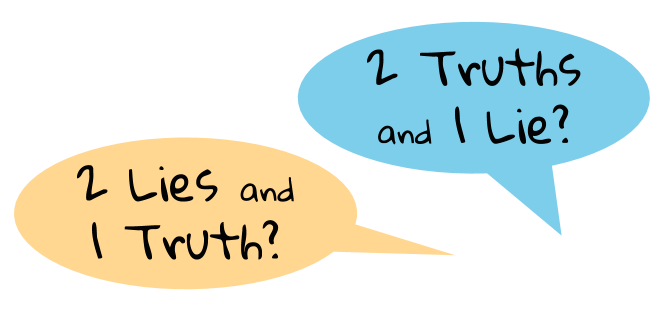Lesson 8
Solve Problems with Multiplication and Division
Warm-up: Number Talk: Divide by 8 (10 minutes)
Narrative
This Number Talk encourages students to think flexibly about numbers to divide. The understandings elicited here will be helpful throughout this unit as students divide whole numbers and build toward fluent multiplication and division.
Launch
- Display one expression.
- “Give me a signal when you have an answer and can explain how you got it.”
Activity
- 1 minute: quiet think time
- Record answers and strategy.
- Keep expressions and work displayed.
- Repeat with each expression.
Student Facing
Find the value of each expression mentally.
- \(848 \div 8\)
- \(4,\!848 \div 8\)
- \(4,\!852 \div 8\)
- \(5,\!848 \div 8\)
Student Response
For access, consult one of our IM Certified Partners.
Activity Synthesis
- “How did you use the first few expressions to help you find the value of the last expression?”
- “How might you use multiplication to find the value of each quotient?”
Activity 1: Two Truths and a Lie, or Two Lies and a Truth? (15 minutes)
Narrative
In this activity, students are given three situations and asked to determine which ones could be true and which are not. To do so they need to carefully make sense of the quantities in each story and how they are related (MP2). Students may explain why a situation is true by writing one or more expressions or equations to represent the relationships and perform the calculations to check. Students may also reason using estimation and mental computation when explaining why a situation must be false.
Supports accessibility for: Conceptual Processing, Organization, Social-Emotional Functioning
Launch
- Groups of 2–4
- 5 minutes: independent work time
Activity
- 5 minutes: group discussion
- Monitor for different ways students represent and prove how each situation could be true or false, including using reasoning based on estimation and mental math.
Student Facing
Here are three situations. Which ones are true? Which ones are not true?
Show how you know.

- Situation A: A high-rise building has 53 stories. The first floor is 17 feet tall, but all other stories are each 11 feet tall. The building is 589 feet tall.
- Situation B: A window washer has 600 seconds to wash 17 windows of a building. It takes 54 seconds to wash each window. The washer will finish washing all the windows and have 11 seconds to spare.
- Situation C: Eleven students set a goal to raise at least \$600 for charity. Each student raised \$17 each day. After 3 days of fundraising, the group will still be short by \$54.
Student Response
For access, consult one of our IM Certified Partners.
Activity Synthesis
- Select students to share their responses and reasoning.
- Record the expressions or equations they wrote to represent the situations. Highlight different ways of representing the same situation.
- “For which situations did you need to find the actual values in order to tell if they were true or not true? Why is that?” (I tried to estimate on Situation A and I knew it would be close, so I did the multiplication and added to find out if the total height was really 610 feet. I needed to write equations to make sense of Situation C. I just did the multiplication and subtraction to check to see if it could really be \$54.)
- “For which stories was it possible to tell by estimation and mental math?” (I could do some estimation for all of them, but for Situation B I could tell that that even if he washed 10 windows the window washer would almost be out of time and couldn’t do 17.)
Activity 2: Buses for a Field Trip (20 minutes)
Narrative
In this activity, students interpret situations that involve equal groups and require making sense of a remainder. Students solve problems using their understanding of multiplication and by connecting their solutions to the quantities in the situation (MP2). Although parts of the task could be solved by dividing a multi-digit number by a two-digit number, students are not expected to perform division with these numbers until grade 5. Students may access this task using multiplication and addition.
Encourage students to use the Three Reads routine as needed to solve problems.
Advances: Listening, Speaking
Launch
- Groups of 2
Activity
- 5 minutes: independent work time
- 5 minutes: group work time
- Monitor for the different ways students represent and solve the problem, including how they discuss how to treat any unfilled buses (the remainder).
Student Facing
A school is taking everyone on a field trip. It needs buses to transport 375 people.
Bus Company A has small buses with 27 seats in each.
Bus Company B has large buses with 48 seats in each.

-
What is the smallest number of buses that will be needed if the school goes with:
- Bus Company A? Show your reasoning.
- Bus Company B? Show your reasoning.
- Which bus company should the school choose? Explain your reasoning.
-
Bus Company C has large buses that can take up to 72 passengers.
Diego says, “If the school chooses Bus Company C, it will need only 6 buses, but the buses will have more empty seats.”
Do you agree? Explain your reasoning.
Student Response
For access, consult one of our IM Certified Partners.
Activity Synthesis
- Select students to share their responses and reasoning. Record the different representations students used to solve the problems.
- Consider asking:
- “How did you decide how many buses you would need from each company?”
- “Do all the buses carry the same amount of passengers? How can you see that in your representations or equations?”
- “How did you decide what operations to use to answer each question?”
Lesson Synthesis
Lesson Synthesis
“Today we analyzed and solved many kinds of word problems.“
“What are some strategies we should use when solving problems to make sure we understand what the problem is asking?” (Read it carefully, think about what the numbers tell us and how they are related to one another.)
“What are some ways to figure out the relationships between the numbers?” (Create a representation—an equation or a diagram—and check to see if the representation matches the problem being solved.)
“How would we know if our answer makes sense?” (Check to see if it’s reasonable in the situation, double check our calculations, check to see if it answers the question.)
Cool-down: To and Fro (5 minutes)
Cool-Down
For access, consult one of our IM Certified Partners.